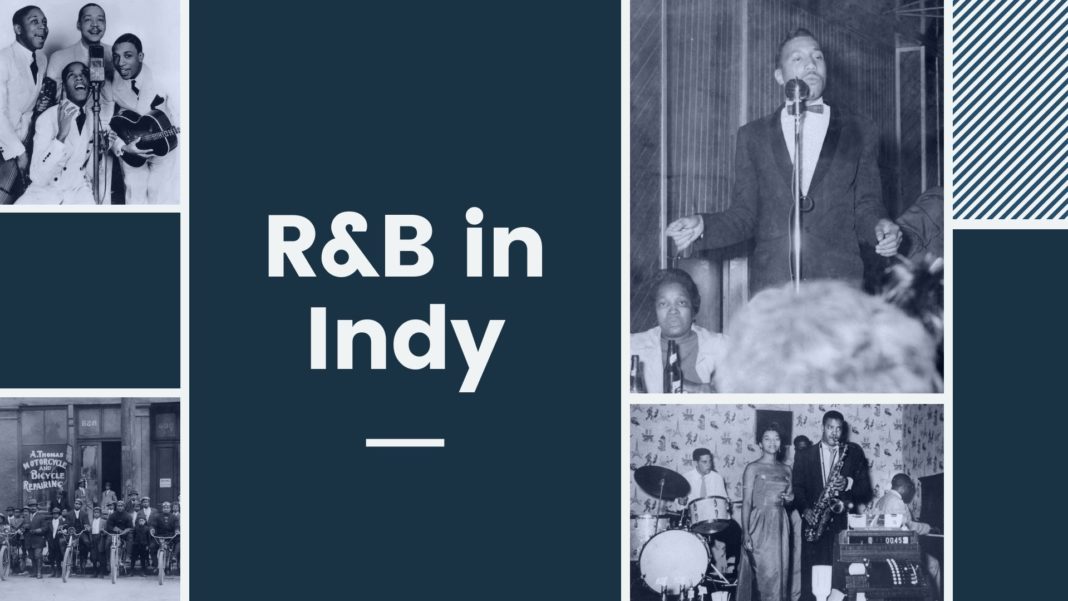
During the 1950s and 1960s, walking down Indiana Avenue was a cultural adventure. The Indianapolis thoroughfare, sometimes referred to as just “the Avenue,” offered musical venues, restaurants, and theaters that catered to the city’s black community.
In the decades that followed, this vibrant neighborhood changed—because of Indianapolis’s slow integration, because of the neglect of city services, and because of new highways that cut a path through midtown, among other causes. But that makes it only more important to remember the heyday of this overlooked part of Hoosier history. On the Avenue, famous out of towners would show up to perform; B.B. King and Ella Fitzgerald both played the Sunset Terrace Ballroom.
Even better, the Avenue was the place where many local stars got their start.
From Buskers to Bestsellers
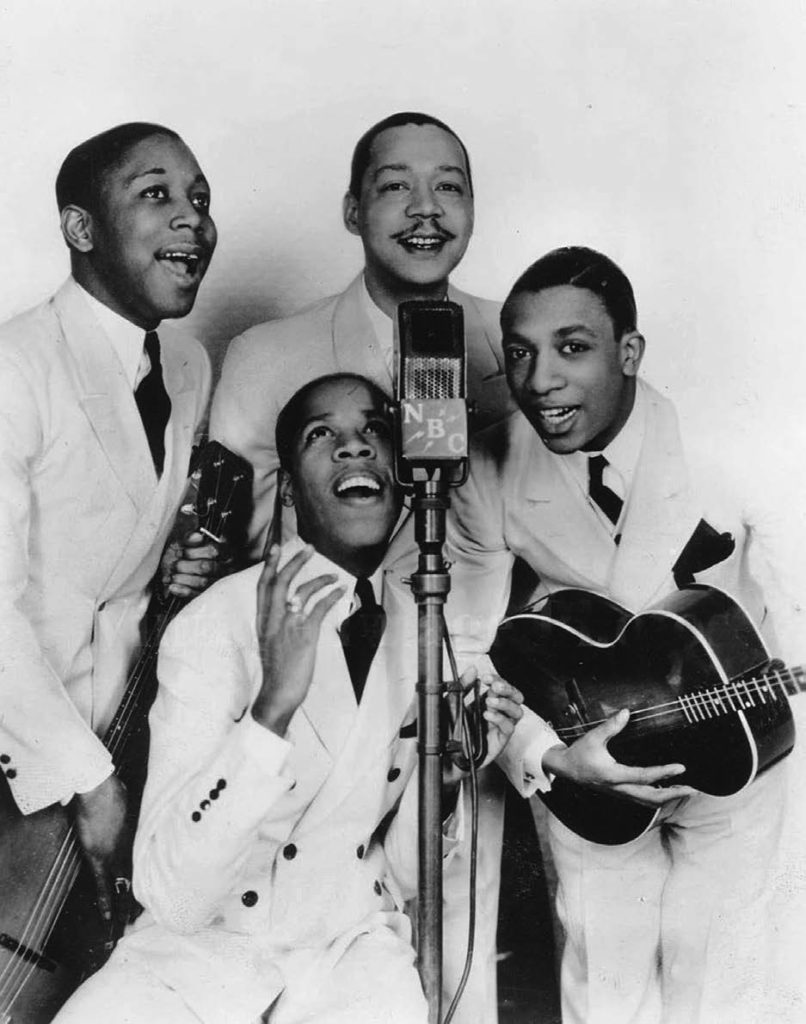
The Avenue’s musical history started long before its post-war R&B boom. When the Walker Theatre opened in the 1920s, three young dancing singers began performing in front of it to the delight of pedestrians. The youngsters were Leonard Reed, James “Mif” Campbell, and Orville “Hoppy” Jones, and they kept singing and dancing, eventually naming themselves the Peanut Boys and then the Ink Spots. A few years later they had a huge hit in “If I Didn’t Care,” a record that sold 19 million copies.
Homegrown Talent
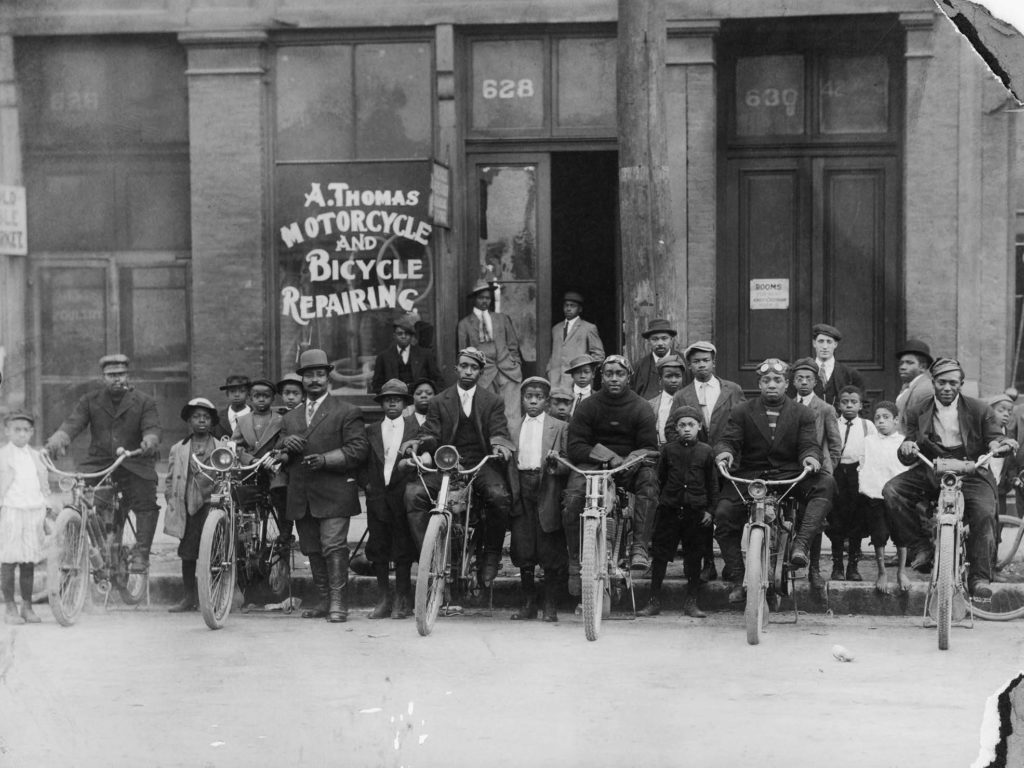
their bicycles there. This photograph was taken in 1917. (Indiana Historical Society via Indianapolis Rhythm and Blues by David Leander Williams)
Another popular spot near the Avenue was the Douglas Theatre. There the bluesman “Champion Jack” DuPree sponsored “The Midnite Rambles,” an after-midnight talent show that gave local singers, dancers, comedians, and musicians the opportunity to showcase their talent. Many of the Indiana Avenue entertainers were graduates of this show, and two of them, Ophelia Hoy and Flo Garvin, got their start at the Douglas.
Leading Lady
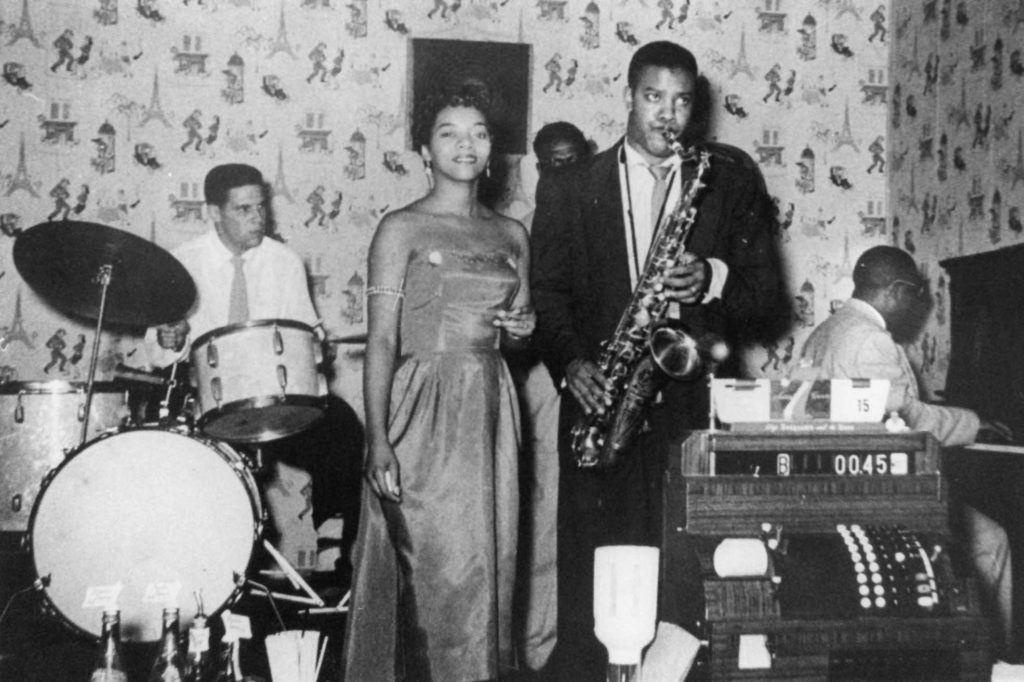
Lola Barbee was a petite, sweet, and sultry vocalist who came to town from Pennsylvania. She appeared in many venues on and off the Avenue, and in 1953 the Indianapolis Recorder’s musicians’ poll voted her the top female vocalist. On many gigs, she was backed by the Buddy Parker Combo or the Count Fisher Combo.
Rising Tides
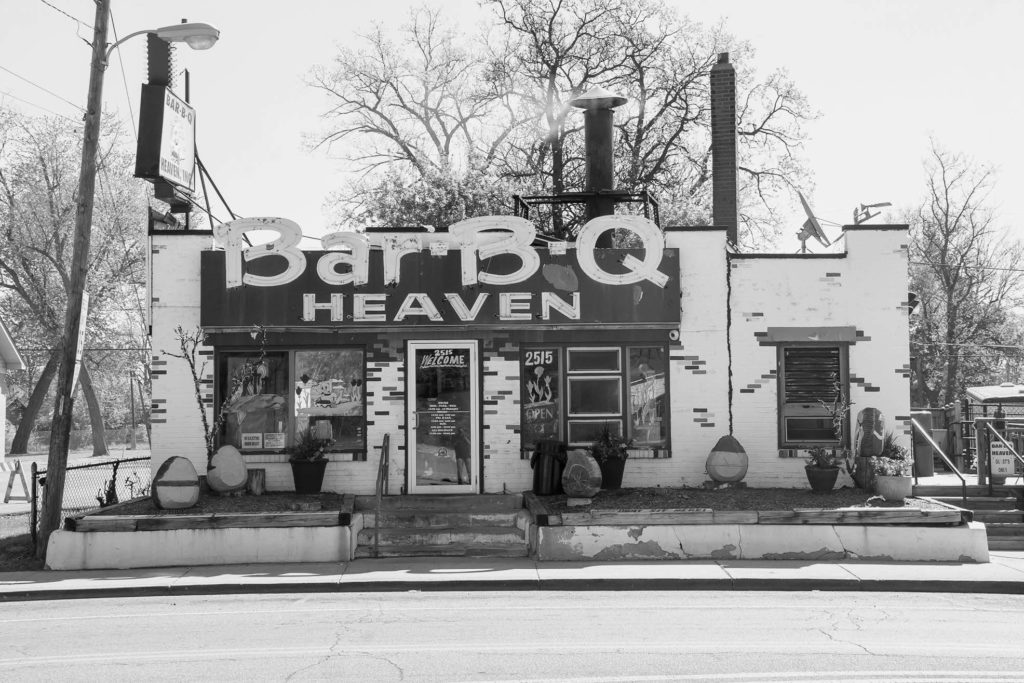
The Avenue’s sense of community extended beyond music. Bar B-Q Heaven opened its doors in 1952 and was one of the area’s most successful businesses. Folks lined up sidewalk deep at the door for the mouth-watering barbecue, chili, pastries, and other dishes. Even traveling stars would drop by during their stints in Indianapolis, including the blues vocalist Big Maybelle and comedians Jackie “Moms” Mabley and Redd Foxx.
The Singing Boxer
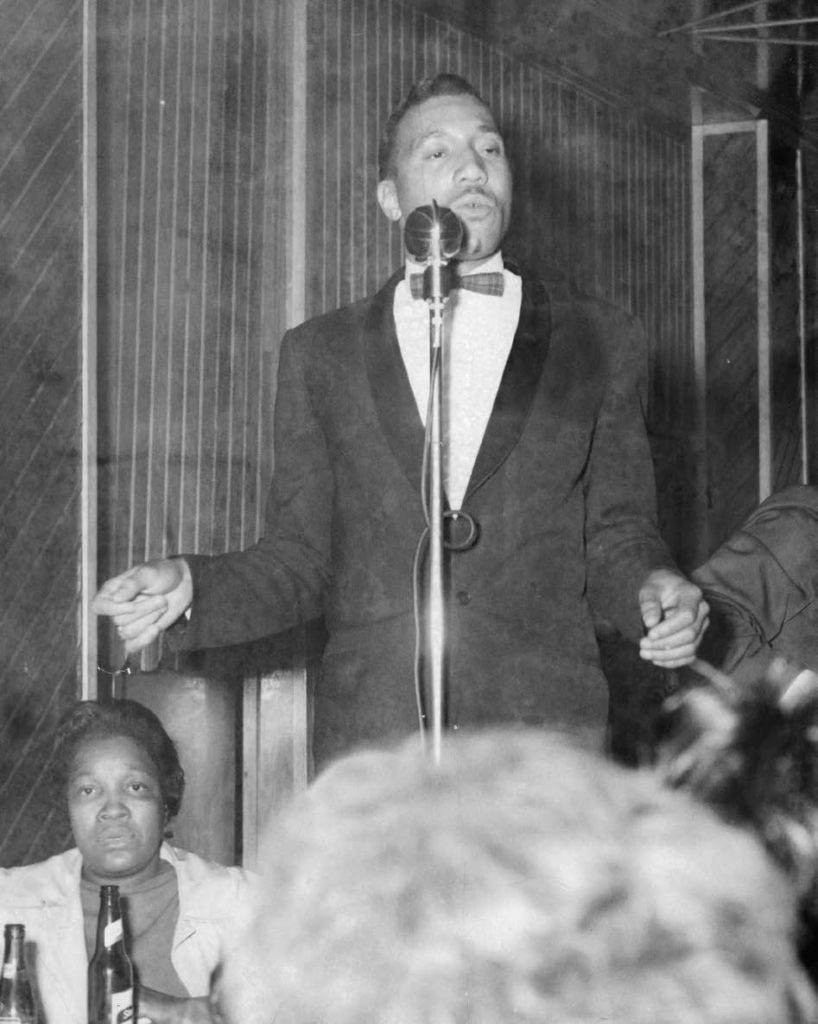
Jimmy Guilford was an east-side teenager who walked to Indiana Avenue daily to practice at the Senate Avenue YMCA boxing program. As he passed by the clubs, he was captivated by the great music that escaped those venues. Guilford eventually traveled and performed with a number of musical groups, including the world-renowned Ink Spots.
High School Harmony
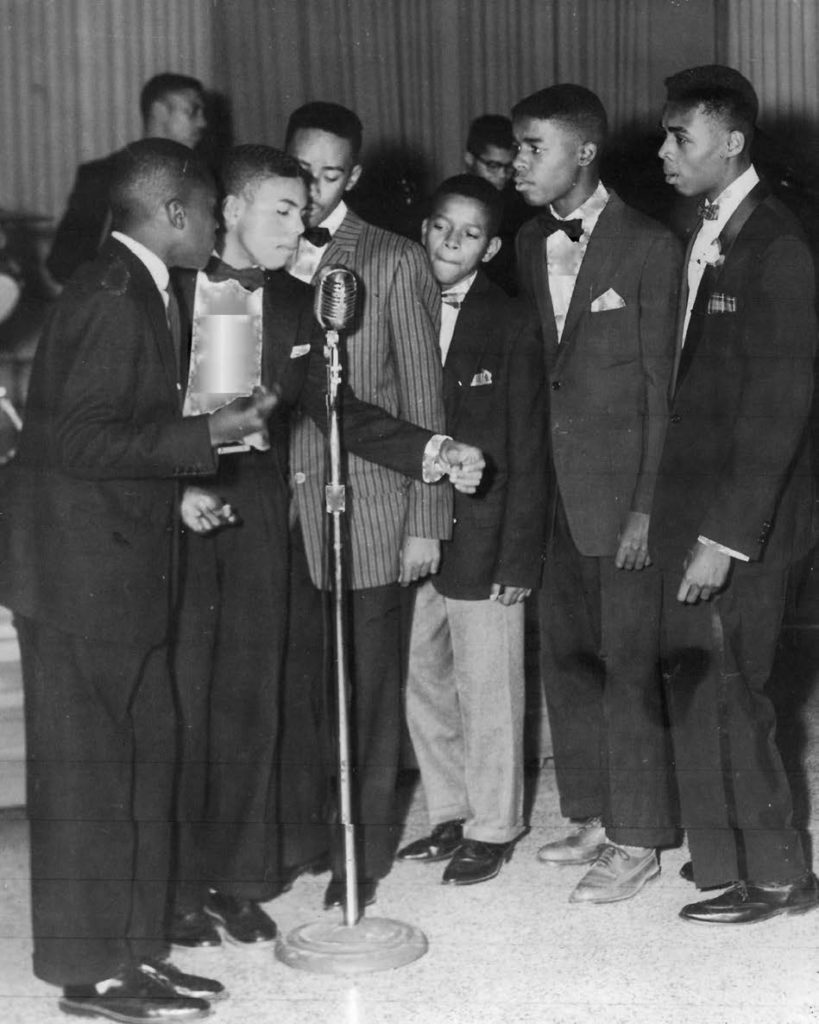
Another important institution in this area was Crispus Attucks High School, and in the 1950s students there formed The Thrills, a group that performed rhythm-and-blues
songs at school assemblies and concerts. The members were, from left to right, Reginald Gammon, Marcus Hampton, Ernest Jack Haley, Richard Pierson, Robert Hurd, and Warren Hurley. It was one of many musical acts to emerge from the school, and then The Thrills went on stage, they could count on crowds of screaming students.
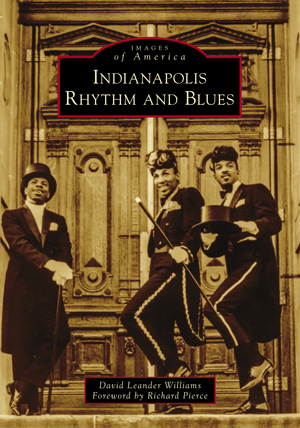
INDIANAPOLIS RHYTHM & BLUES
Dive into the rich and vibrant history of R&B in Indianapolis with this visual archive from Arcadia Publishing’s Images of America Series.

